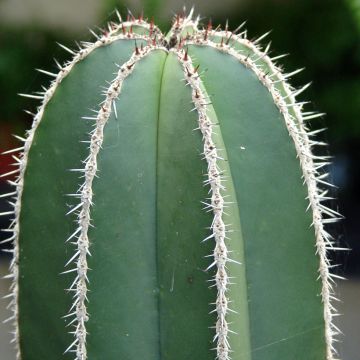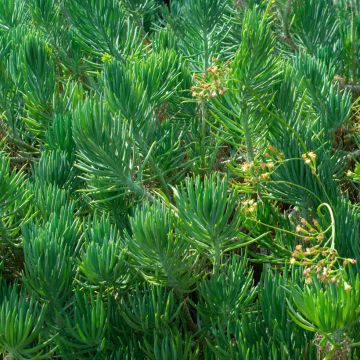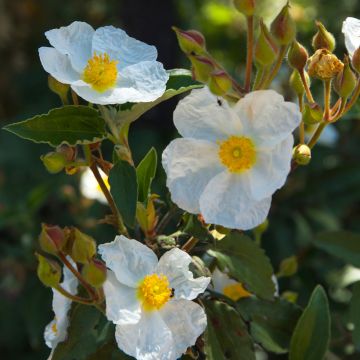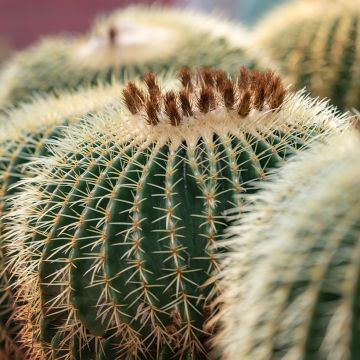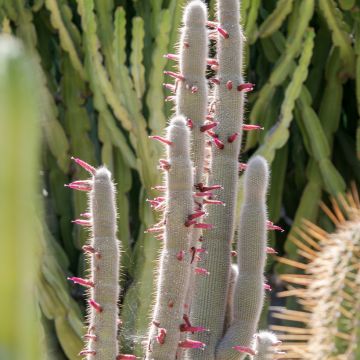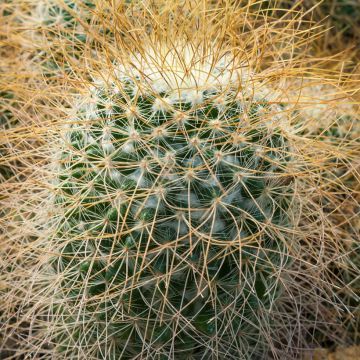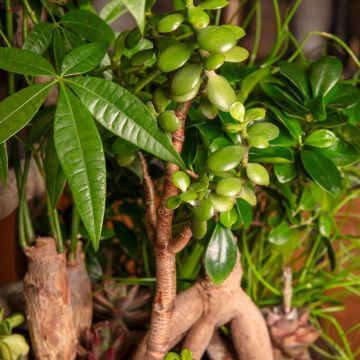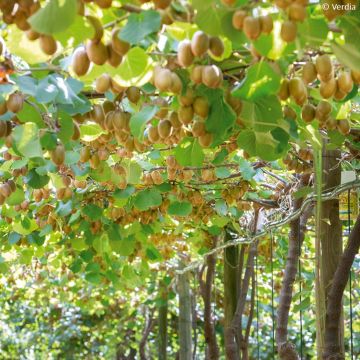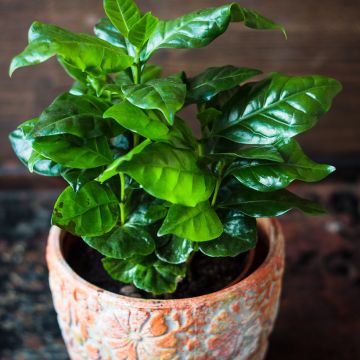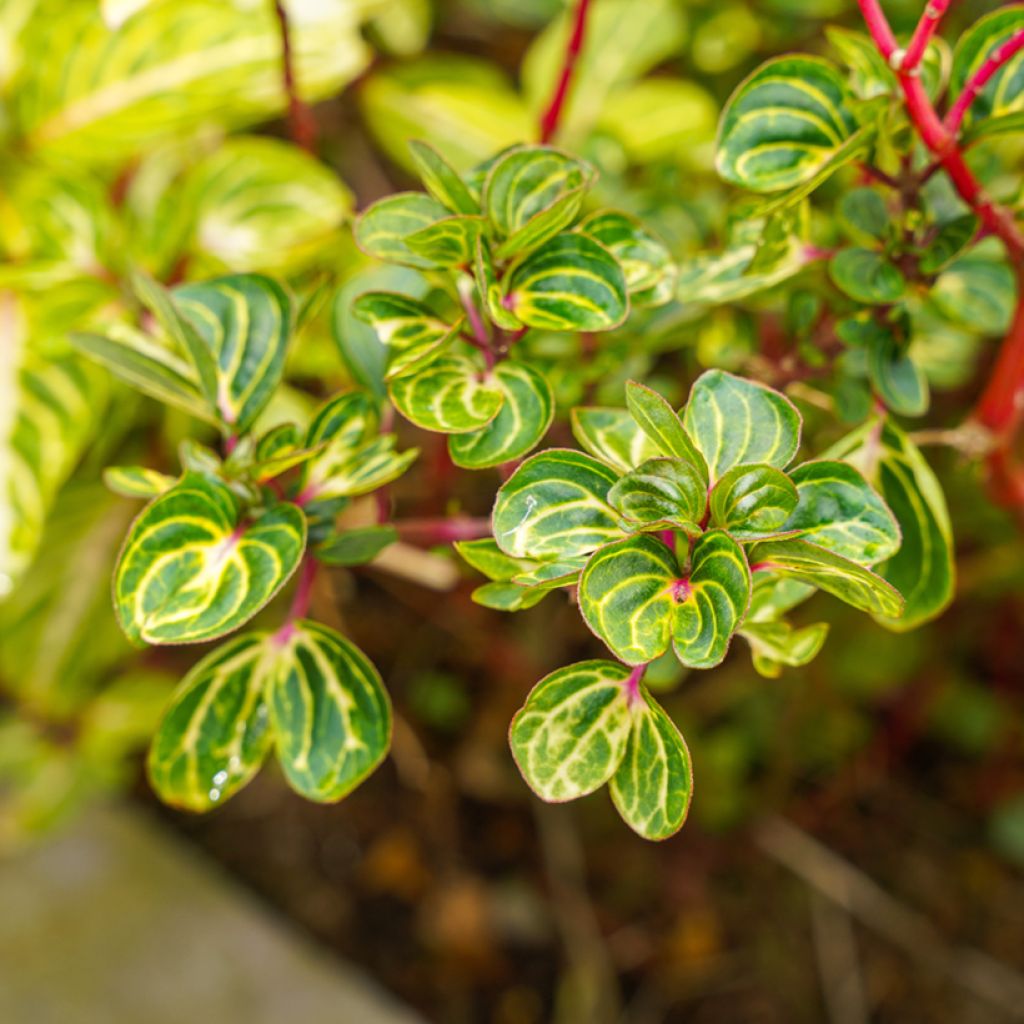

Iresine herbstii - Bloodleaf plant
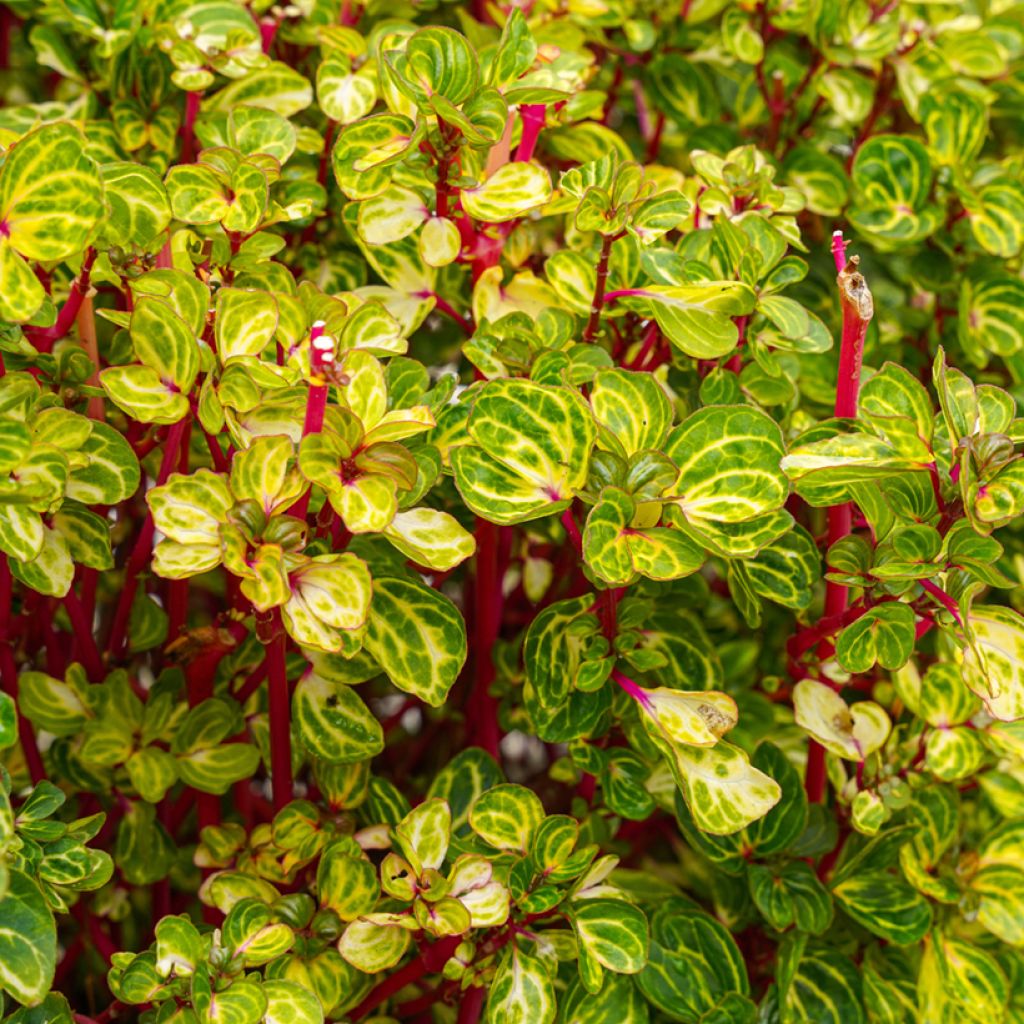

Iresine herbstii - Bloodleaf plant
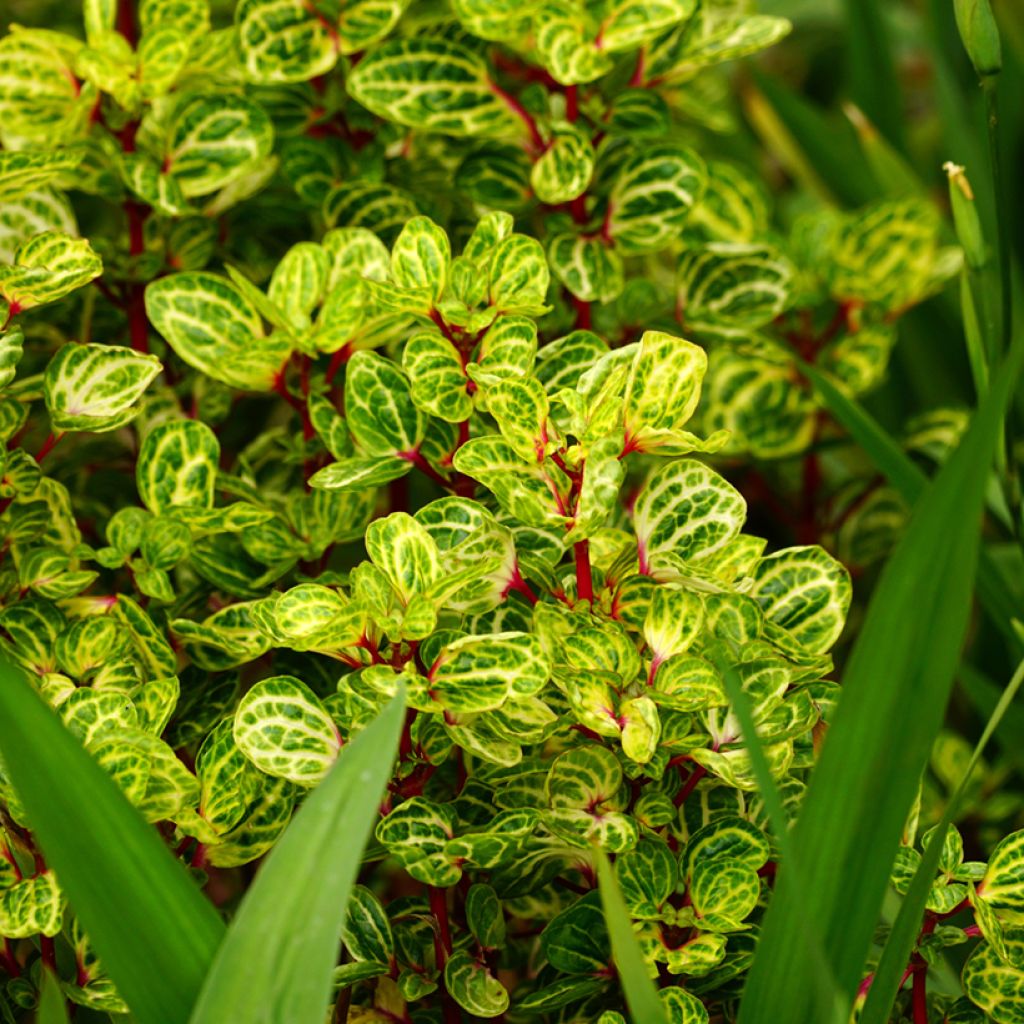

Iresine herbstii - Bloodleaf plant
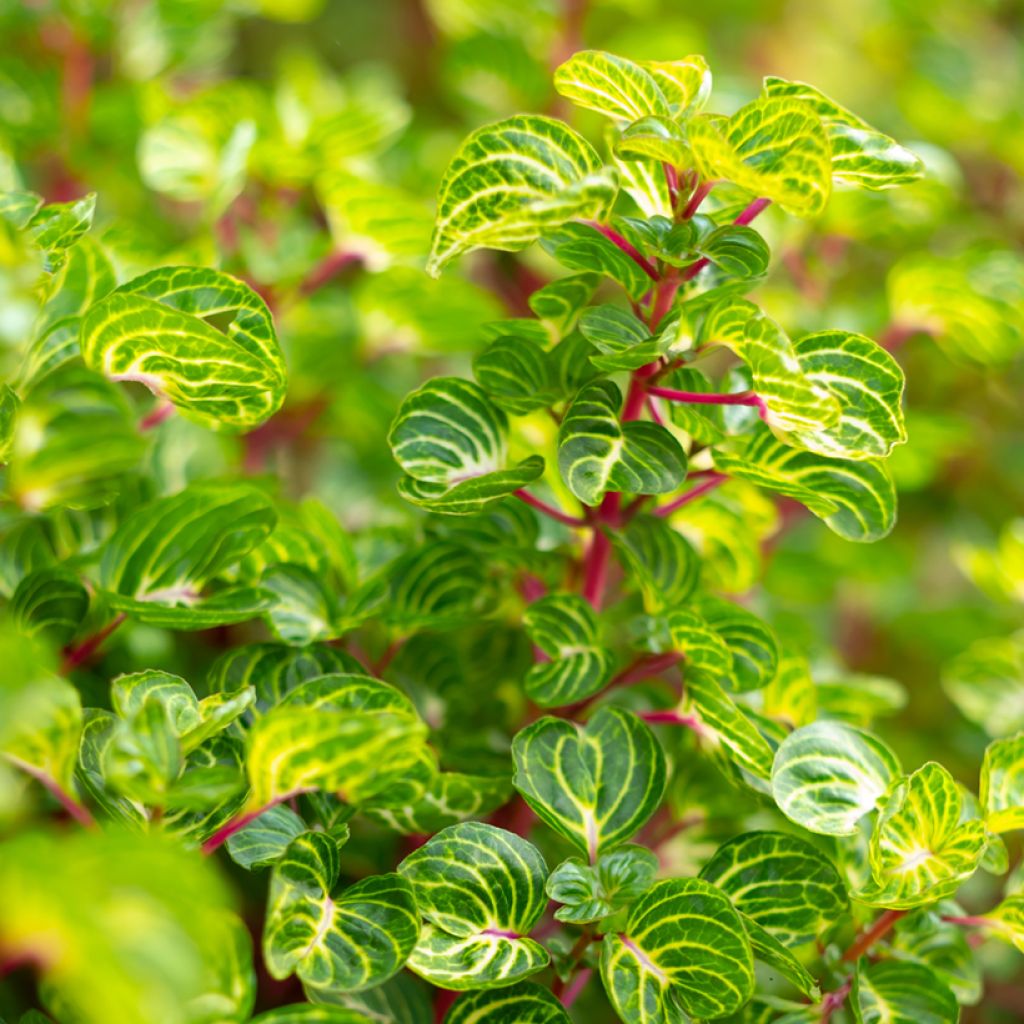

Iresine herbstii - Bloodleaf plant
Iresine herbstii - Bloodleaf plant
Iresine herbstii
Bloodleaf plant
Why not try an alternative variety in stock?
View all →This plant carries a 30 days recovery warranty
More information
We guarantee the quality of our plants for a full growing cycle, and will replace at our expense any plant that fails to recover under normal climatic and planting conditions.
Description
The Iresine herbstii is a decorative tropical plant, perfect for brightening up well-lit interiors. Its intensely coloured foliage, deep purplish-red with vibrant pink veins, immediately catches the eye and adds a bold touch to any plant décor. With a bushy habit, it thrives in bright, indirect light and a warm, humid atmosphere. It can also be grown outdoors during the warmer months as an annual, then brought indoors at the first sign of cold weather.
Herbst's Bloodleaf or Iresine diffusa f. herbstii, is a species of herbaceous perennial plant belonging to the Amaranthaceae family. Native to regions of South America such as Brazil, Peru, Nicaragua, and Ecuador, this plant is often cultivated as an annual or as a houseplant in temperate climates due to its sensitivity to cold. It is prized for its ornamental foliage in shades of red, purple, or pink, which add a vibrant splash of colour to gardens and interiors. The habit of Iresine herbstii is bushy, with fleshy, ramified stems that can reach up to 1.5 m in height in its natural habitat but are typically kept between 30 and 50 cm in all directions when grown indoors. The leaves, opposite and single, measure between 2 and 6 cm, sometimes up to 10 cm long, with veins lighter than the rest of the lamina, creating a decorative contrast. The inflorescences, though inconspicuous, consist of small unisexual flowers in white to greenish hues. Iresine herbstii is cultivated for its attractive foliage rather than its flowers. It thrives at temperatures between 18 and 27°C. Outdoors, it prefers a sunny to partially shaded position and well-drained soil rich in organic matter. Indoors, it requires bright light and an ambient humidity of 50 to 70% to maintain the intensity of its colours. Regular pruning of the tips encourages compact and dense growth. Propagation is easily done by stem cuttings, which can root in water or directly in soil. An interesting fact: in some cultures, the leaves of Iresine herbstii are used as a natural food colouring due to their intense pigmentation.
It is essential to protect the Bloodleaf from drafts and temperatures below 15°C. Regular watering is recommended, keeping the substrate slightly moist but not waterlogged. The Iresine herbstii, with its striking purple foliage and luminous veins, serves as a focal point in any indoor plant arrangement. Placed in a simple ceramic pot or suspended in a hanging planter, it enlivens the space with its chromatic intensity. It pairs beautifully with the variegated foliage of Pilea 'Mojito' or the softness of a Tradescantia zebrina 'Pink Paradise', creating a harmonious contrast between textures and colours. Pairing it with a Syngonium 'Neon Robusta' or a Calathea 'Crimson' results in a lush and vibrant display.
Report an error about the product description
Iresine herbstii - Bloodleaf plant in pictures
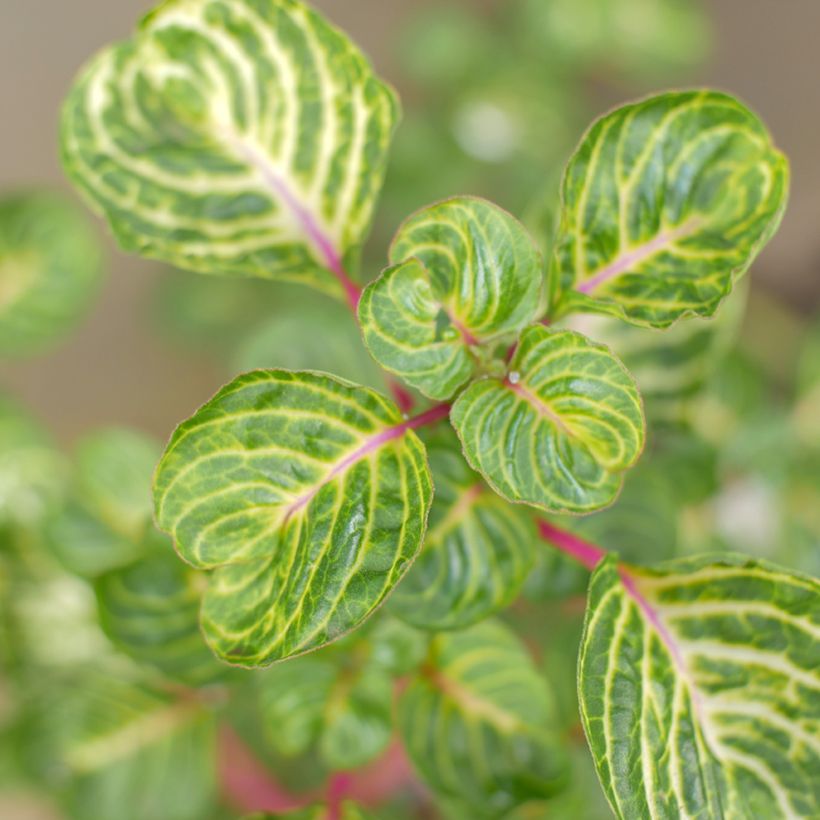

Foliage
Plant habit
Flowering
Botanical data
Iresine
herbstii
Amaranthaceae
Bloodleaf plant
South America
Safety measures
Location
Location
Maintenance and care
Potting advice, substrates and fertilisers
Houseplant care
Disease and pest advice
Maintenance and care
This item has not been reviewed yet - be the first to leave a review about it.
Haven't found what you were looking for?
Hardiness is the lowest winter temperature a plant can endure without suffering serious damage or even dying. However, hardiness is affected by location (a sheltered area, such as a patio), protection (winter cover) and soil type (hardiness is improved by well-drained soil).

Photo Sharing Terms & Conditions
In order to encourage gardeners to interact and share their experiences, Promesse de fleurs offers various media enabling content to be uploaded onto its Site - in particular via the ‘Photo sharing’ module.
The User agrees to refrain from:
- Posting any content that is illegal, prejudicial, insulting, racist, inciteful to hatred, revisionist, contrary to public decency, that infringes on privacy or on the privacy rights of third parties, in particular the publicity rights of persons and goods, intellectual property rights, or the right to privacy.
- Submitting content on behalf of a third party;
- Impersonate the identity of a third party and/or publish any personal information about a third party;
In general, the User undertakes to refrain from any unethical behaviour.
All Content (in particular text, comments, files, images, photos, videos, creative works, etc.), which may be subject to property or intellectual property rights, image or other private rights, shall remain the property of the User, subject to the limited rights granted by the terms of the licence granted by Promesse de fleurs as stated below. Users are at liberty to publish or not to publish such Content on the Site, notably via the ‘Photo Sharing’ facility, and accept that this Content shall be made public and freely accessible, notably on the Internet.
Users further acknowledge, undertake to have ,and guarantee that they hold all necessary rights and permissions to publish such material on the Site, in particular with regard to the legislation in force pertaining to any privacy, property, intellectual property, image, or contractual rights, or rights of any other nature. By publishing such Content on the Site, Users acknowledge accepting full liability as publishers of the Content within the meaning of the law, and grant Promesse de fleurs, free of charge, an inclusive, worldwide licence for the said Content for the entire duration of its publication, including all reproduction, representation, up/downloading, displaying, performing, transmission, and storage rights.
Users also grant permission for their name to be linked to the Content and accept that this link may not always be made available.
By engaging in posting material, Users consent to their Content becoming automatically accessible on the Internet, in particular on other sites and/or blogs and/or web pages of the Promesse de fleurs site, including in particular social pages and the Promesse de fleurs catalogue.
Users may secure the removal of entrusted content free of charge by issuing a simple request via our contact form.
The flowering period indicated on our website applies to countries and regions located in USDA zone 8 (France, the United Kingdom, Ireland, the Netherlands, etc.)
It will vary according to where you live:
- In zones 9 to 10 (Italy, Spain, Greece, etc.), flowering will occur about 2 to 4 weeks earlier.
- In zones 6 to 7 (Germany, Poland, Slovenia, and lower mountainous regions), flowering will be delayed by 2 to 3 weeks.
- In zone 5 (Central Europe, Scandinavia), blooming will be delayed by 3 to 5 weeks.
In temperate climates, pruning of spring-flowering shrubs (forsythia, spireas, etc.) should be done just after flowering.
Pruning of summer-flowering shrubs (Indian Lilac, Perovskia, etc.) can be done in winter or spring.
In cold regions as well as with frost-sensitive plants, avoid pruning too early when severe frosts may still occur.
The planting period indicated on our website applies to countries and regions located in USDA zone 8 (France, United Kingdom, Ireland, Netherlands).
It will vary according to where you live:
- In Mediterranean zones (Marseille, Madrid, Milan, etc.), autumn and winter are the best planting periods.
- In continental zones (Strasbourg, Munich, Vienna, etc.), delay planting by 2 to 3 weeks in spring and bring it forward by 2 to 4 weeks in autumn.
- In mountainous regions (the Alps, Pyrenees, Carpathians, etc.), it is best to plant in late spring (May-June) or late summer (August-September).
The harvesting period indicated on our website applies to countries and regions in USDA zone 8 (France, England, Ireland, the Netherlands).
In colder areas (Scandinavia, Poland, Austria...) fruit and vegetable harvests are likely to be delayed by 3-4 weeks.
In warmer areas (Italy, Spain, Greece, etc.), harvesting will probably take place earlier, depending on weather conditions.
The sowing periods indicated on our website apply to countries and regions within USDA Zone 8 (France, UK, Ireland, Netherlands).
In colder areas (Scandinavia, Poland, Austria...), delay any outdoor sowing by 3-4 weeks, or sow under glass.
In warmer climes (Italy, Spain, Greece, etc.), bring outdoor sowing forward by a few weeks.


































